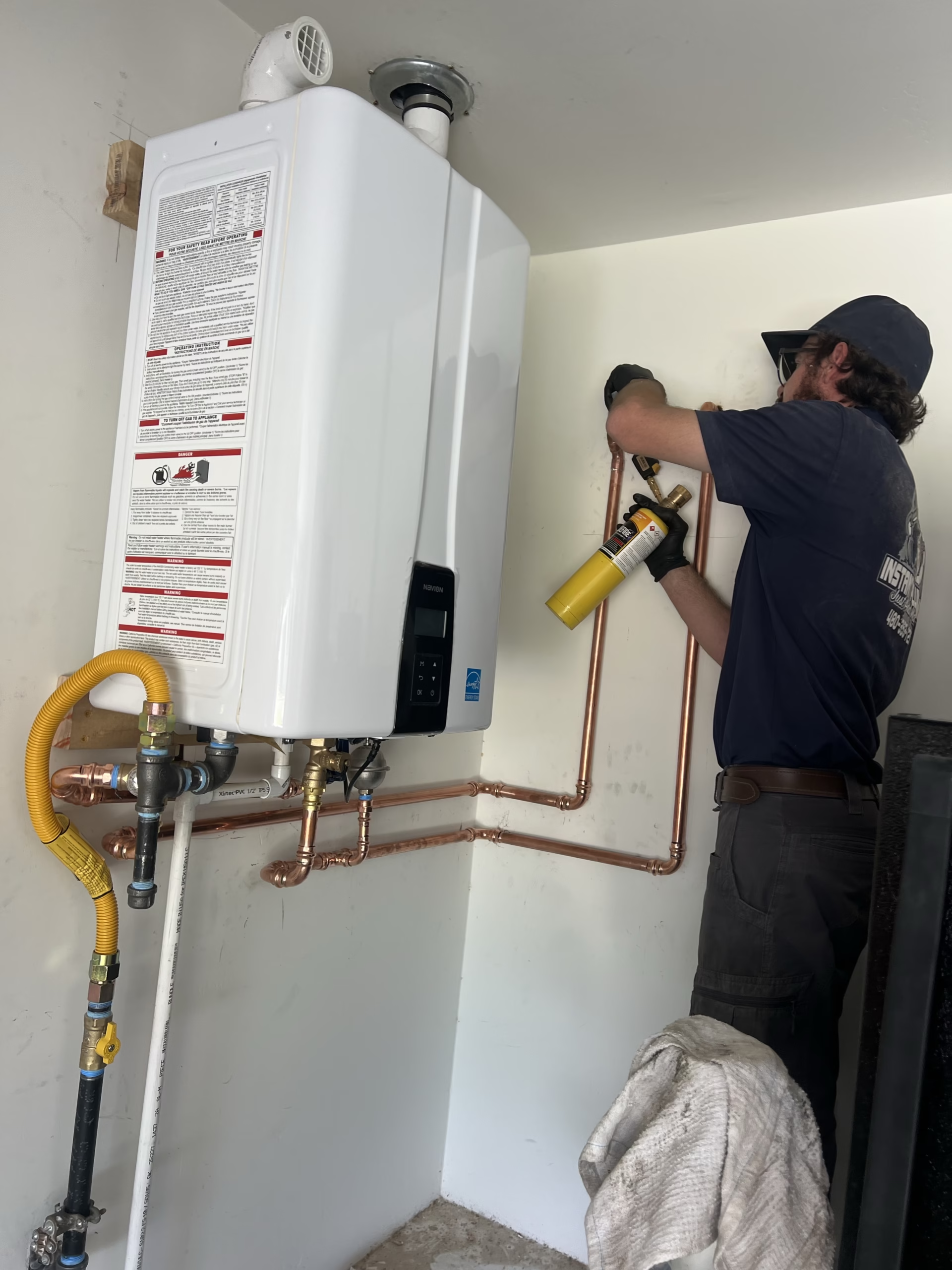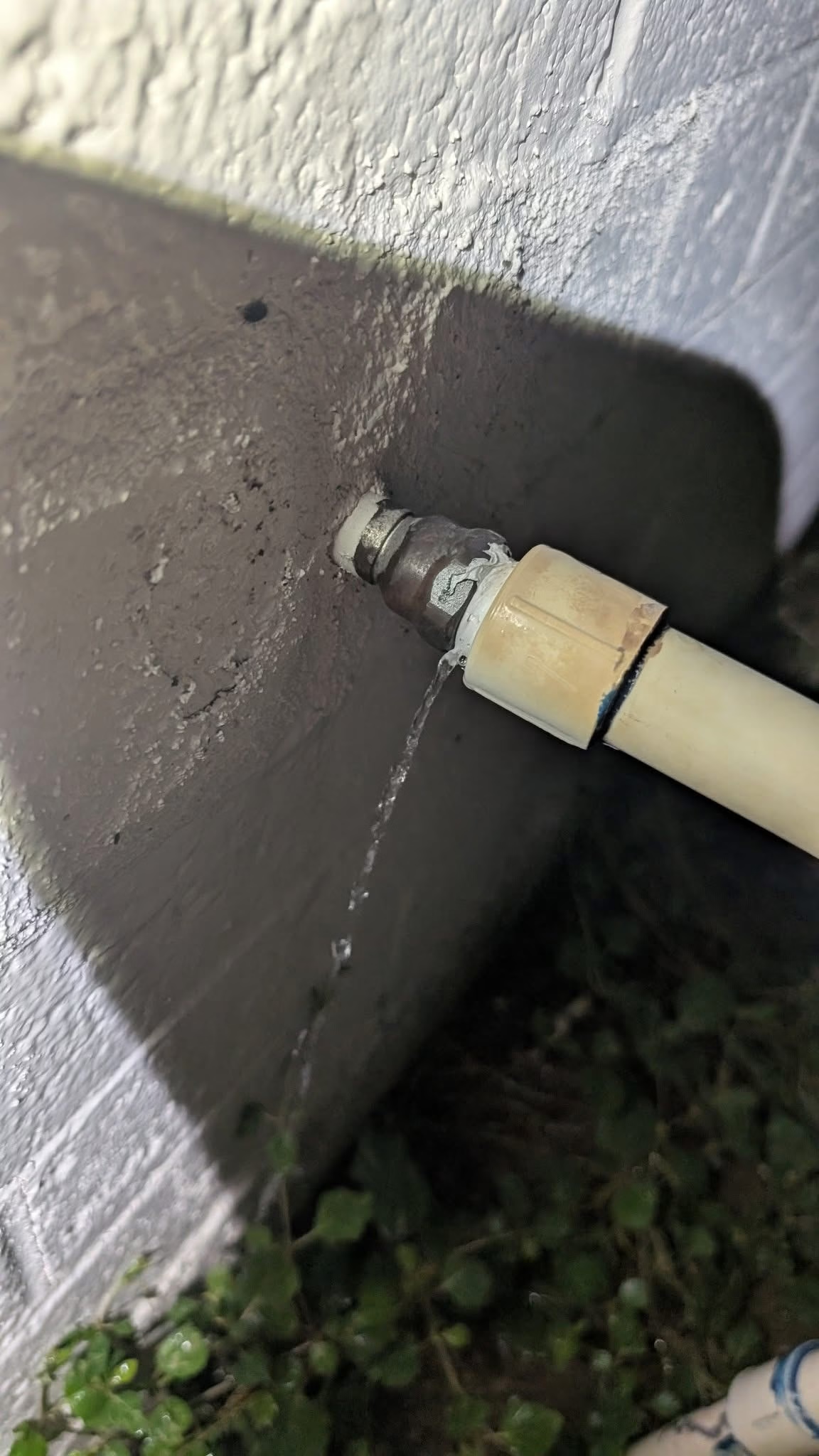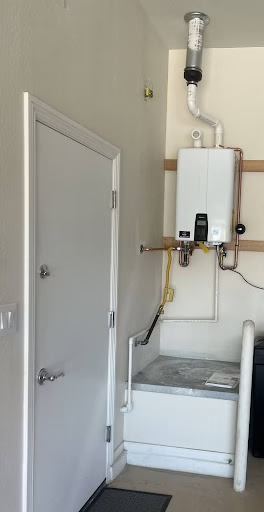If you live in Scottsdale, you’ve probably noticed the water is a little different here. Maybe you see white, chalky buildup on your faucets and showerheads that no amount of scrubbing seems to fix. Perhaps your coffee and iced tea just don’t taste quite right, or you’re buying a ton of bottled water every week. You’ve heard about water softeners and reverse osmosis systems, but the names sound so technical and confusing.
You’re a homeowner trying to do the right thing for your family. You want to protect your expensive appliances from damage and give your loved ones the best drinking water possible. But what’s the difference between these two systems, and which one is the right fit for your home? You’re afraid of buying the wrong thing or spending money on a system that doesn’t actually solve your problem. We get it. It’s confusing, and you just want a straight answer.
At Instant Plumbing, we’ve been helping homeowners in Scottsdale and the wider Phoenix area navigate their water quality questions since 2001. We’re here to clear up the confusion and explain exactly what each system does. By the time you’re done reading, you’ll know the difference between a water softener and a reverse osmosis system, and you’ll feel confident about which one is the best solution for your family.
The Scottsdale Water Dilemma: Confusing Hardness with Impurities
In the Valley, our water comes from a few different places, like the Colorado River and local groundwater wells. While this water is perfectly safe to drink, it comes with a couple of unique challenges that lead to all those headaches you’re having.
The Hidden Problems with Arizona’s Hard Water
Arizona’s water is famously “hard.” This means it has a lot of minerals in it, especially calcium and magnesium. These minerals are what cause that ugly white buildup on your fixtures, known as limescale. Hard water doesn’t just make your bathroom look bad; it also causes serious problems for your home’s plumbing. It can clog your pipes, damage your water heater and dishwasher, make your soap less effective, and leave your hair feeling dry. These minerals are the culprits behind many plumbing problems we see every week.
The Difference Between Water Hardness and Water Contaminants
It’s a common mistake to think that hard water is the same thing as “dirty” or “unclean” water. Hardness is a mineral issue, not a safety issue. The water from your tap is safe to drink. However, even safe tap water can have other things in it that affect its taste and smell, like chlorine, lead, or other dissolved solids. A water softener deals with the minerals that cause hardness. A reverse osmosis system deals with those other tiny particles that affect purity and taste. They are designed to solve two completely different problems.
Why a Single Solution Doesn’t Always Fit Your Needs
Because hard water and water contaminants are two separate problems, there is no single machine that is designed to solve both perfectly. A water softener is not a water purifier, and an RO system is not a water softener. They each have a different job to do, and understanding what those jobs are is the key to making the right choice for your home.
Understanding Water Softeners: The Solution for Hard Water
A water softener is a whole-house system that’s all about making your water feel and work better. It’s installed on the main water line where the water enters your home, so it treats every single drop of water you use.
How a Water Softener Works to Protect Your Plumbing
A water softener uses a process called ion exchange. The system has a tank filled with tiny beads. As hard water flows through the tank, the calcium and magnesium minerals stick to these beads. In exchange, the beads release harmless sodium or potassium ions into the water. This process removes the minerals that cause hardness, leaving you with “soft water.” It’s a simple, reliable process that protects your entire home from the damaging effects of hard water.
The Visible Signs That You Need Softer Water
You can easily tell if you need a water softener by looking around your home. Are your dishes coming out of the dishwasher with spots and a cloudy film on them? Does your skin feel dry and itchy after a shower, and does your hair feel rough? Do you have to use a lot of soap to get a good lather? And of course, the most obvious sign is that crusty white buildup on your faucets, showerheads and coffee maker. If you see these things, a water softener is the solution.
What a Water Softener Does and Doesn’t Do
A water softener is a fantastic piece of equipment that solves a lot of problems. It protects your plumbing, extends the life of your appliances, saves you money on soap, and makes your skin and hair feel great. However, it’s important to remember what it doesn’t do. A water softener does not remove bacteria, viruses, lead, chlorine or other contaminants that might be in your water. It only removes the minerals that cause hardness. It’s a hard water machine, not a water purification machine.
Understanding Reverse Osmosis: The Solution for Pure Drinking Water
A reverse osmosis (RO) system is a water purifier. It’s designed to give you the cleanest, purest drinking water possible. Unlike a water softener, an RO system is a “point-of-use” system, meaning it’s typically installed under your kitchen sink to treat the water coming from a specific faucet.
How a Reverse Osmosis System Purifies Your Drinking Water
An RO system works by forcing water through a special, very fine membrane. This membrane has tiny pores that are so small, they let the water molecules pass through but block almost everything else. It removes up to 99% of dissolved solids and contaminants like lead, fluoride, chlorine, and salts. The result is water that tastes crisp and clean, just like the bottled water you buy at the store.
The Peace of Mind That Comes with Filtered Water
The main reason people get an RO system is for peace of mind and great taste. If you’re concerned about what might be in your water, or if you simply don’t like the taste of tap water, an RO system is the perfect solution. It gives you unlimited, clean drinking water right from your tap, so you don’t have to buy bottled water anymore.
What a Reverse Osmosis System Does and Doesn’t Do
An RO system is a champion at creating pure, great-tasting water. However, it’s important to remember what it doesn’t do. An RO system is not designed to treat hard water. The high levels of calcium and magnesium in Scottsdale’s hard water can actually clog and damage the delicate membrane in an RO system, making it stop working. Because of this, it’s often a good idea to have a water softener or another type of pre-filter to protect the RO system if you have very hard water.
Water Softener vs. Reverse Osmosis: A Direct Comparison
Now that we know what each system does, let’s put them side by side so you can see the differences clearly.
Installation and Location: Whole-Home vs. Point-of-Use
A water softener is a whole-home system. It’s installed where the water first enters your home and treats all the water that flows to every faucet, toilet and appliance. It’s usually placed in the garage or a utility closet. An RO system, on the other hand, is a point-of-use system. It’s a smaller unit that’s installed under your kitchen sink and only treats the water coming out of a specific drinking water faucet.
Cost and Maintenance: What to Expect from Each Water Filtration System
The initial cost for a water softener is usually higher since it’s a larger, whole-home system. The main maintenance involves adding salt or potassium to the brine tank every few months. An RO system has a lower initial cost, but it has filters that need to be changed every 6 to 12 months, and the main membrane needs to be replaced every few years.
The Different Types of Water They Produce
This is the most important difference. A water softener produces soft water. This water is free of hard minerals, which means it protects your plumbing and makes your skin feel great. However, it still has everything else that was in the tap water to begin with. An RO system produces purified drinking water. This water is almost completely free of minerals and contaminants and has a clean, crisp taste. The water produced by an RO system is not soft, however, and will not protect your plumbing or appliances from hard water damage.
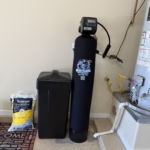
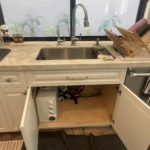
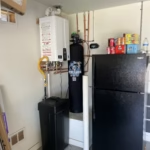
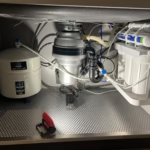
Can You Use a Water Softener and Reverse Osmosis Together?
This is a question we get all the time, and the answer is a resounding “yes.” In fact, for many homes in Scottsdale, this is the ideal solution.
The Smart Approach: A Two-Step System for Your Home
Because a water softener solves the problem of hard water and an RO system solves the problem of water purity and taste, they actually work together perfectly. The water softener treats all the water in the home, protecting your plumbing and appliances. Then, a smaller RO system is installed under the kitchen sink to purify the softened water, giving you the best-tasting drinking water possible.
How Combining the Systems Provides the Best of Both Worlds
When the water going into your RO system has already been softened, it’s much easier on the delicate RO membrane. This helps the RO filters last longer and keeps the system working at its best. It’s a two-step process that gives you the benefits of both systems without any of the drawbacks.
The Benefits of Soft, Filtered Water Throughout Your Home
By combining the systems, you get the best of all worlds. You get soft water for showering, cleaning and protecting your appliances, and you get pure, great-tasting water for drinking and cooking. This combination gives you the ultimate peace of mind that your home’s water is the best it can possibly be.
Making the Right Choice for Your Scottsdale Family
Deciding on a water treatment system is a personal choice that depends on what’s most important to you.
Your Home’s Water: Hardness, Taste and Quality
Do you see signs of hard water damage and want to protect your home and appliances? A water softener is the clear choice. Are you happy with your water’s feel but want to stop buying bottled water and improve the taste for drinking? An RO system is the perfect solution. If you want both—soft water throughout the house and pure drinking water at the kitchen sink—then having both systems is the best of both worlds.
How Instant Plumbing Can Help You Find the Perfect Water Treatment Solution
We know this is a big decision, and it’s one that you shouldn’t have to make alone. The experienced team at Instant Plumbing is here to help. We can test your water, inspect your plumbing and explain your options in a way that’s easy to understand. We’ll help you find a solution that’s right for your home and your budget, and we’ll make sure the installation is done right.
What to Look For in a Professional Water Treatment Plumber
When you’re ready to take the next step, make sure you hire a licensed plumber who specializes in water treatment systems. You want a plumber who knows the local water quality in Scottsdale and understands how to correctly install and maintain these systems to ensure they work perfectly for years to come.
Frequently Asked Questions
Q: Will a water softener make my drinking water taste better?
A: A water softener removes the minerals that cause hardness but does not typically improve the taste of your drinking water. In fact, some people notice a slightly different taste from the added sodium or potassium. For great-tasting drinking water, a reverse osmosis system is a better choice.
Q: Does a reverse osmosis system remove hard water?
A: An RO system is not designed to remove the high levels of minerals that cause hard water. While it will remove some of those minerals, it will not protect your plumbing and appliances from scale buildup. In fact, hard water can clog and damage the RO system’s delicate filters over time.
Q: What is the maintenance for a water softener?
A: The main maintenance for a water softener is simply adding salt or potassium pellets to the brine tank every few months. Occasionally cleaning the brine tank is also needed, but the system does the rest of the work automatically.
Q: Is it bad to drink softened water?
A: No, softened water is perfectly safe to drink. The amount of sodium added to the water is very small and is generally not an issue for most people. If you have a low-sodium diet, you can use potassium chloride instead of salt.
Q: What’s the best water treatment system for my home in Scottsdale?
A: For most homes in Scottsdale, the ideal solution is a combination of a whole-house water softener to protect your home from hard water damage, and a point-of-use reverse osmosis system for pure, great-tasting drinking water at the kitchen sink and refrigerator for the ice and water maker.



